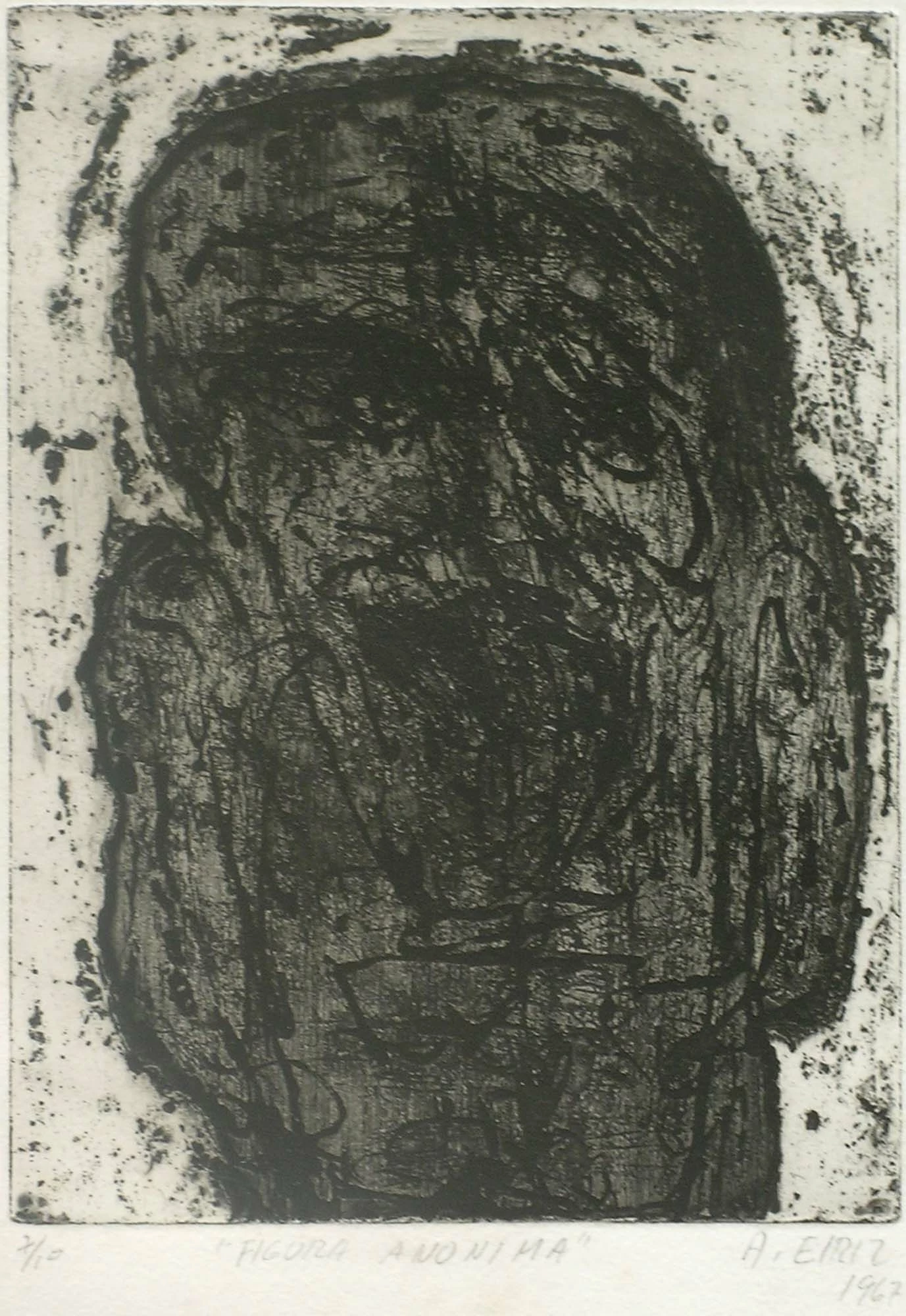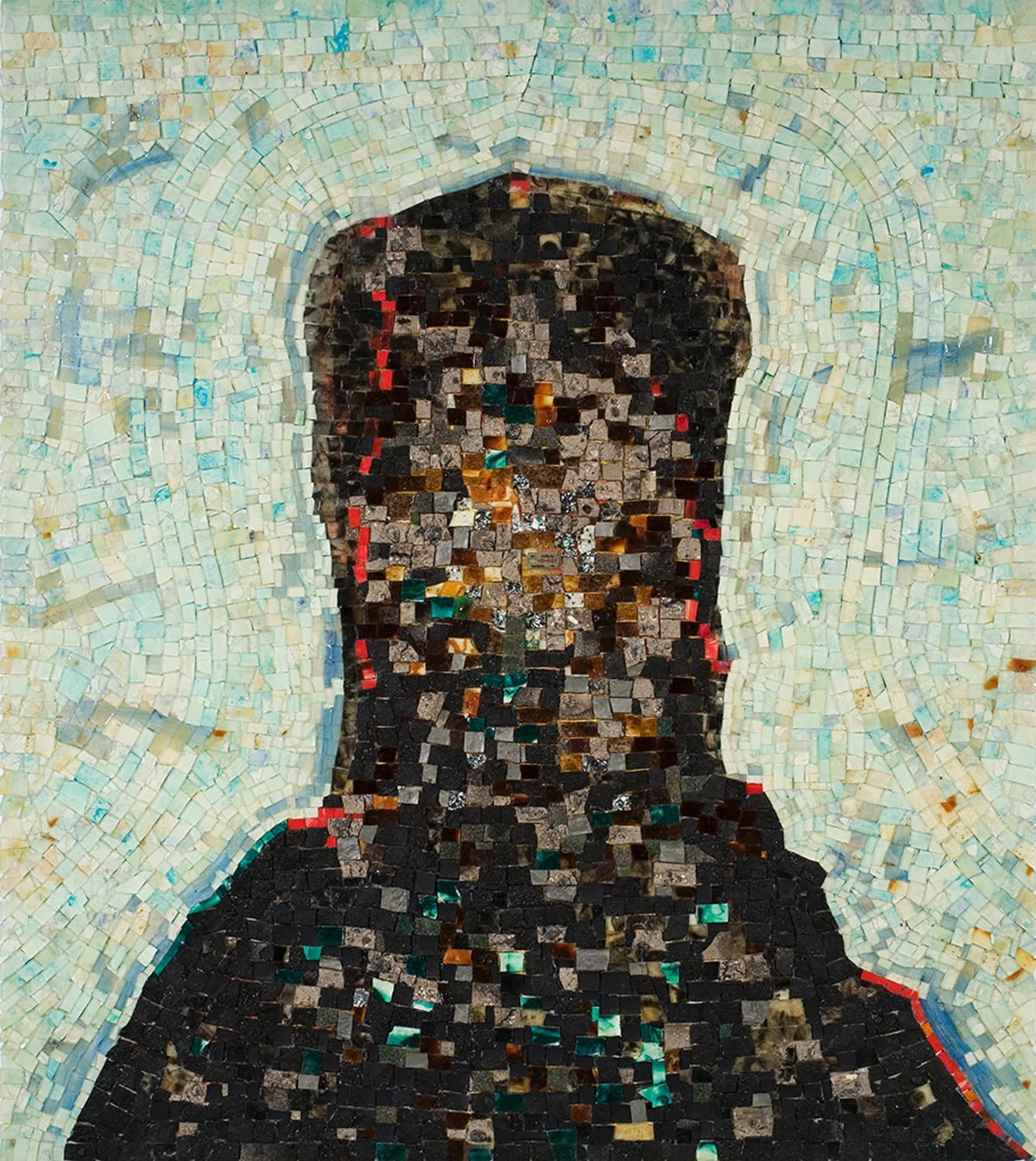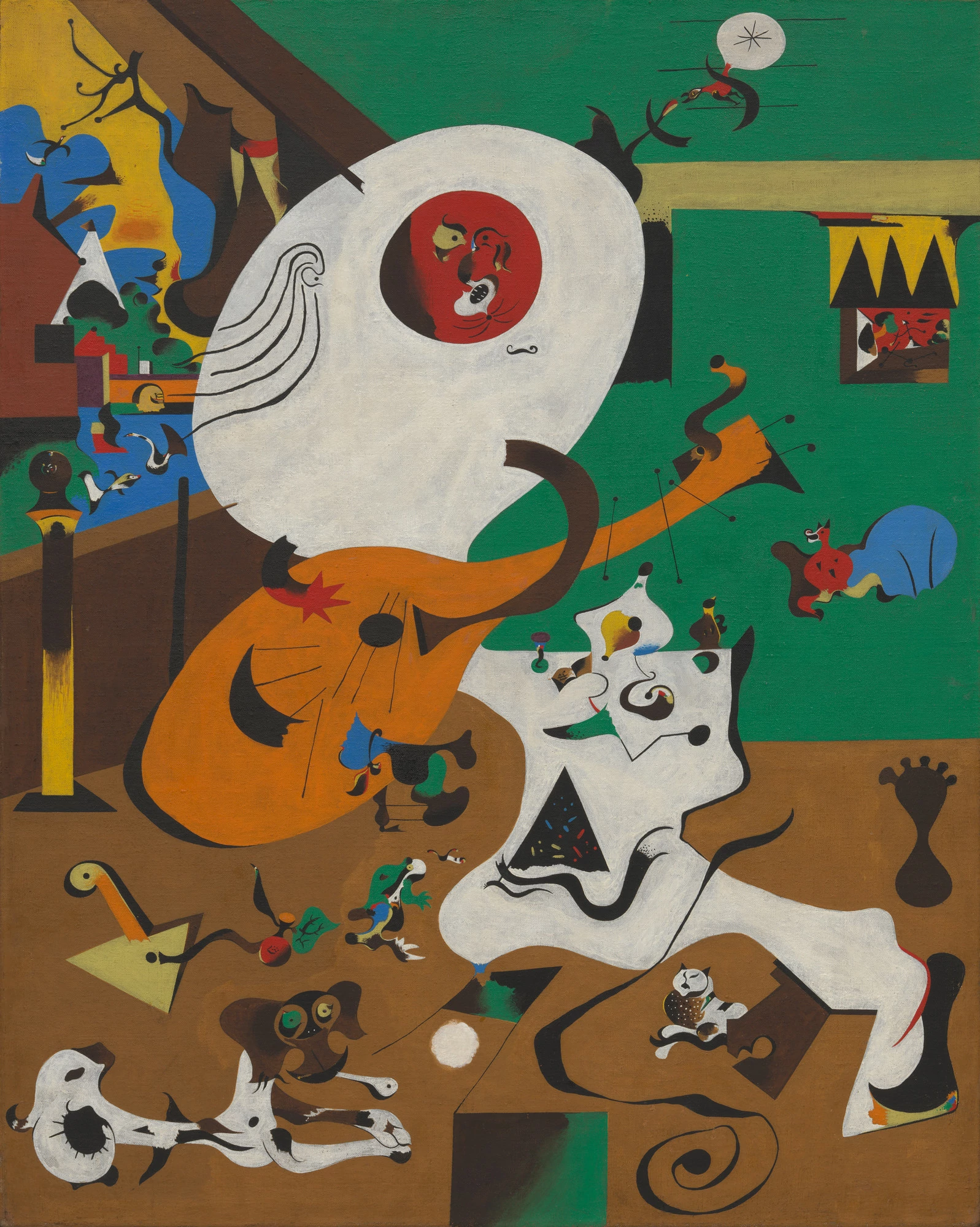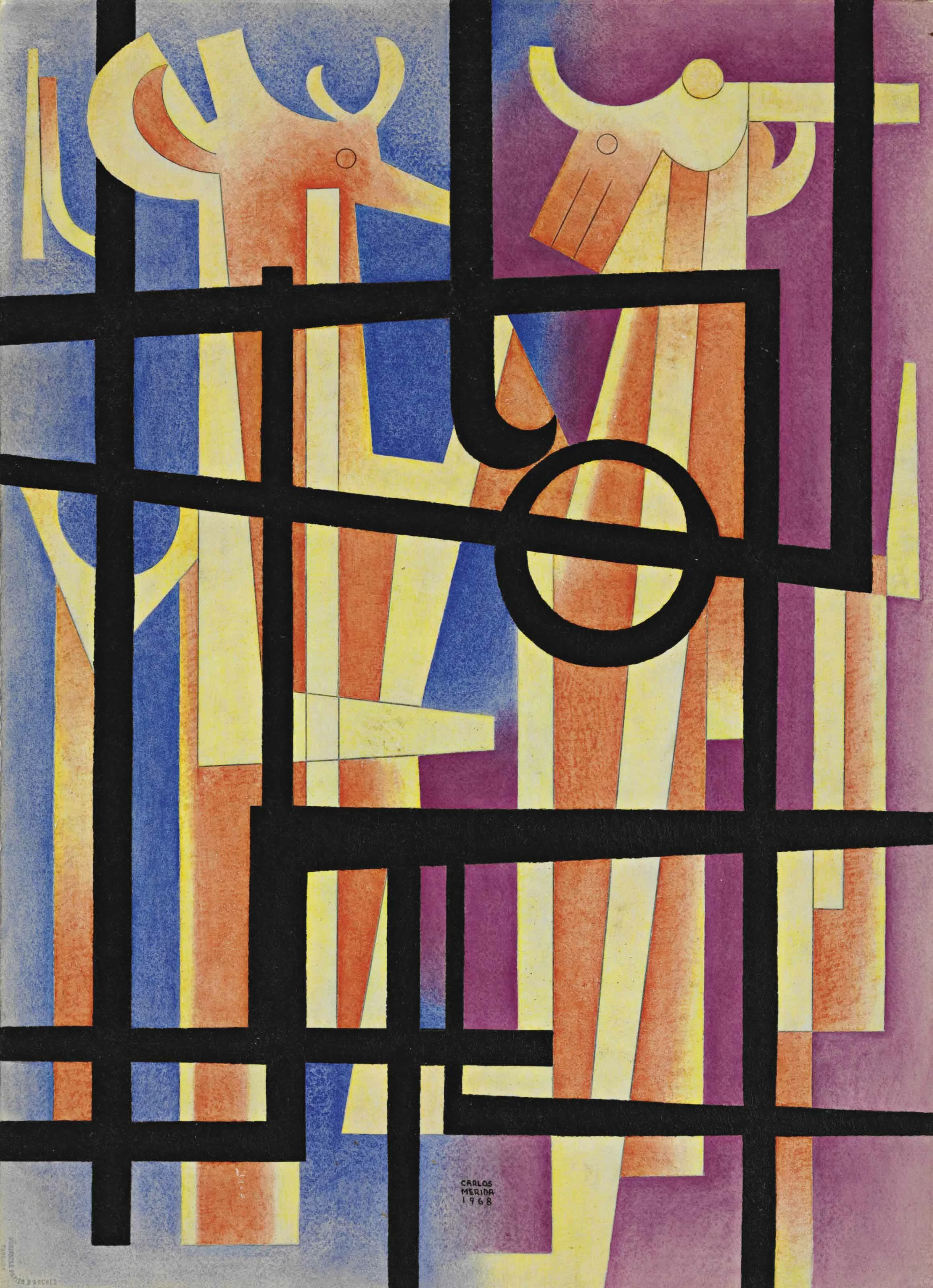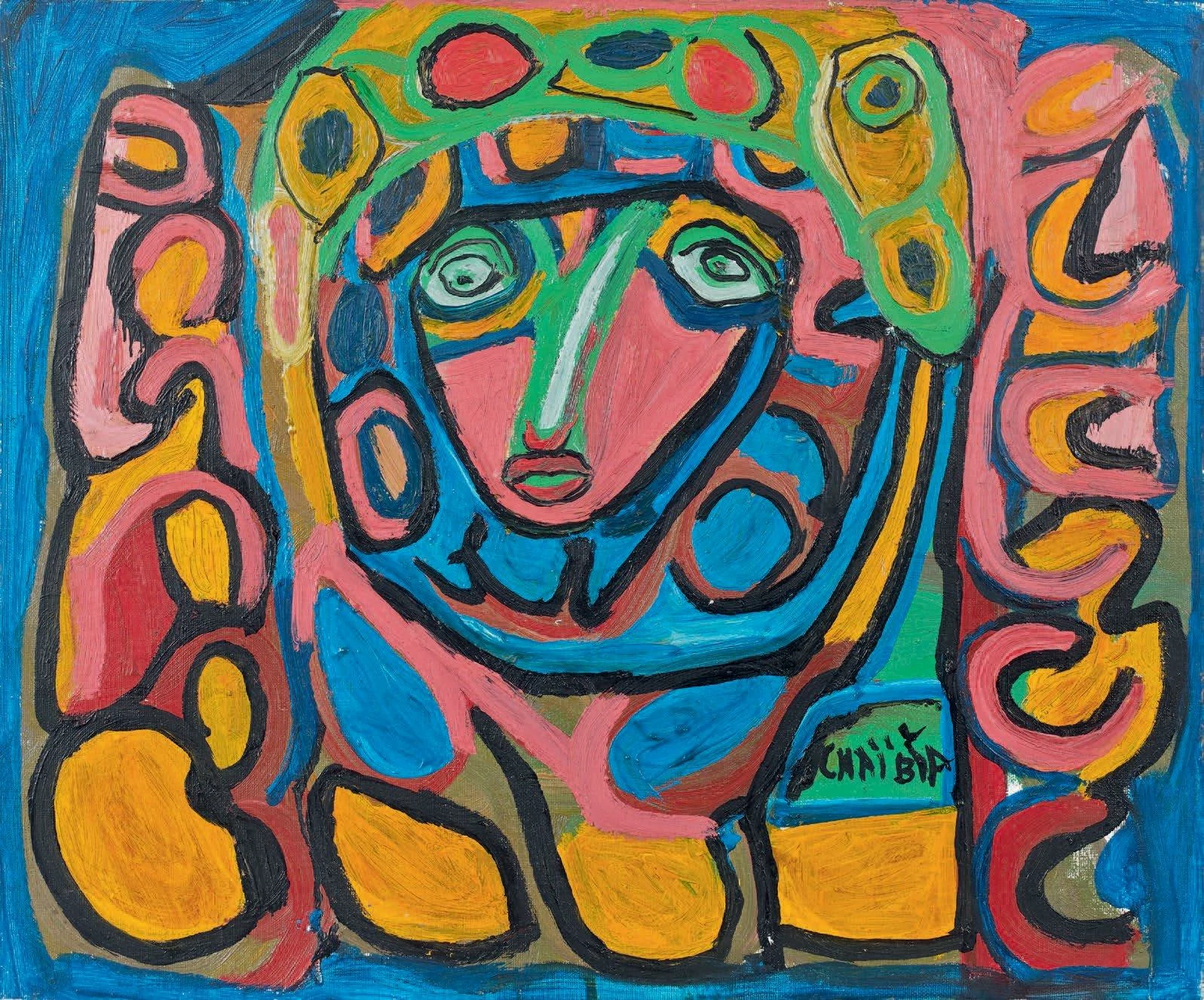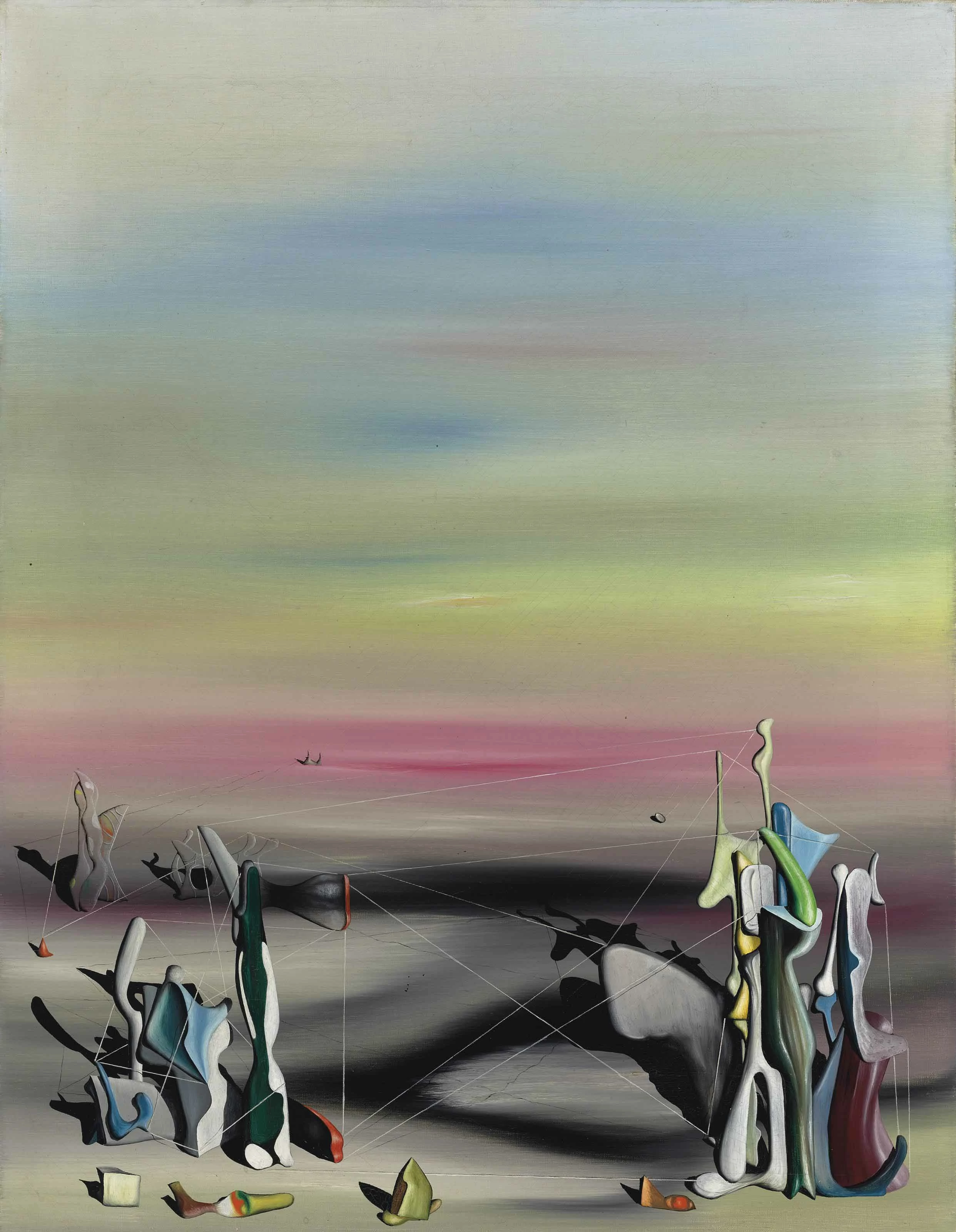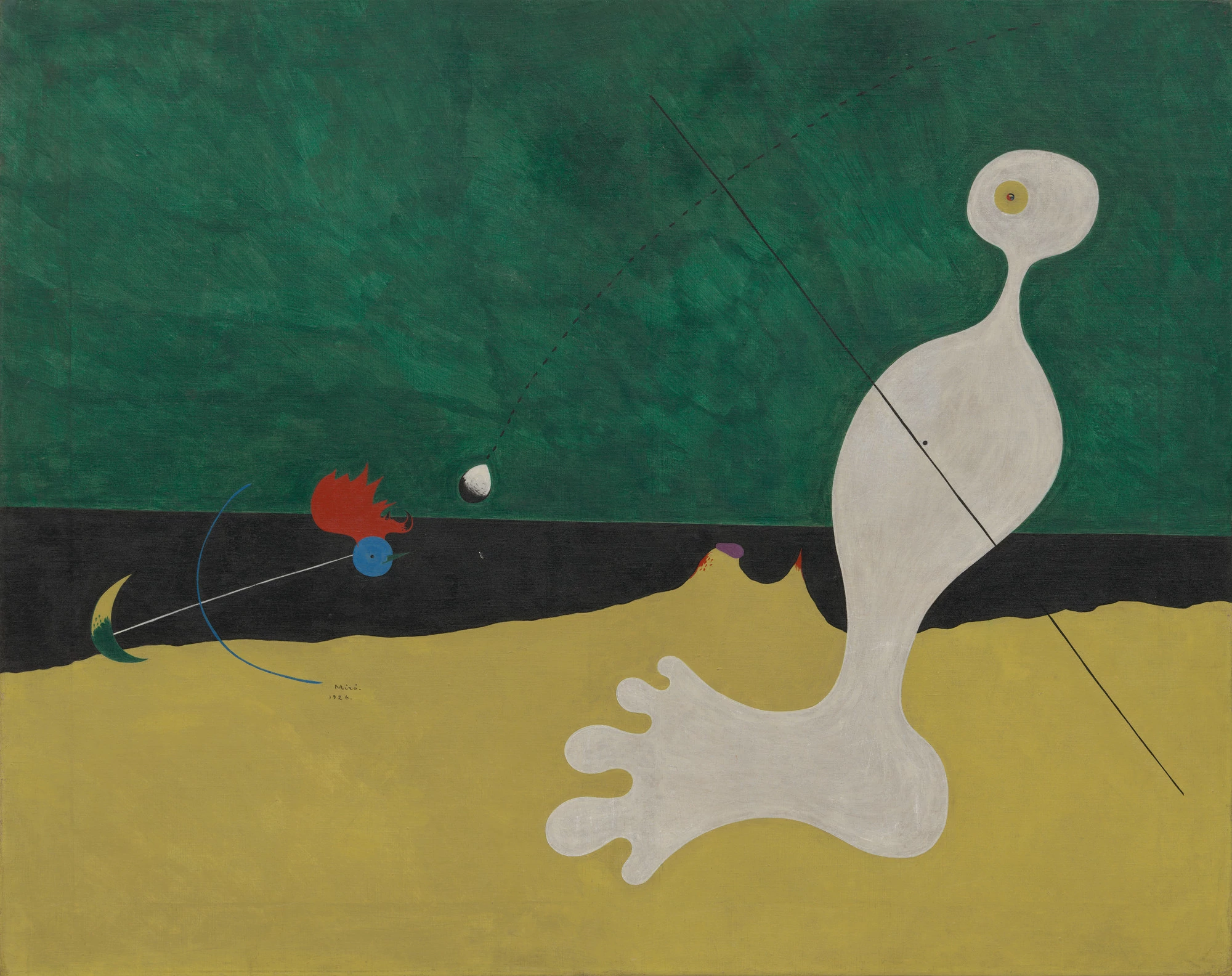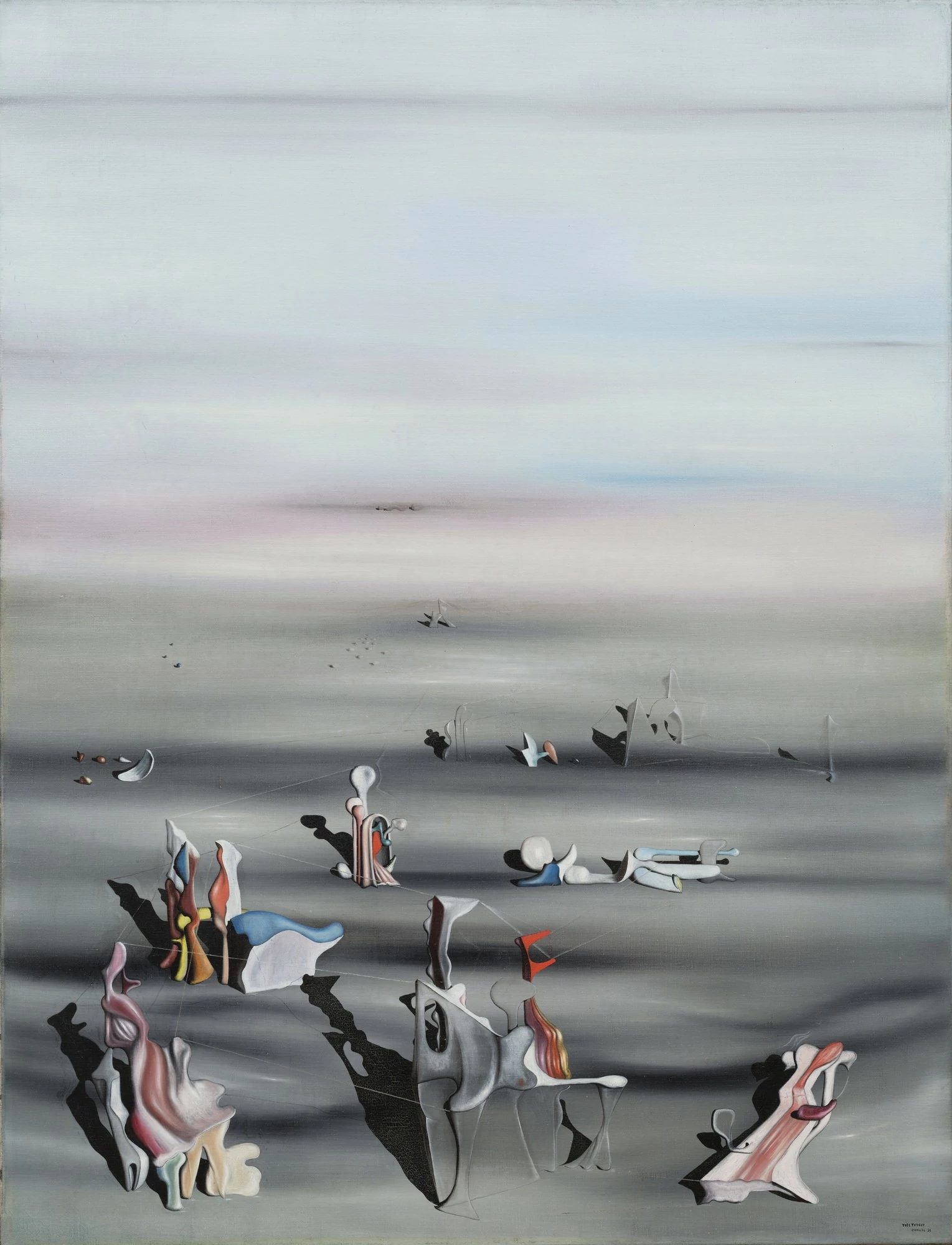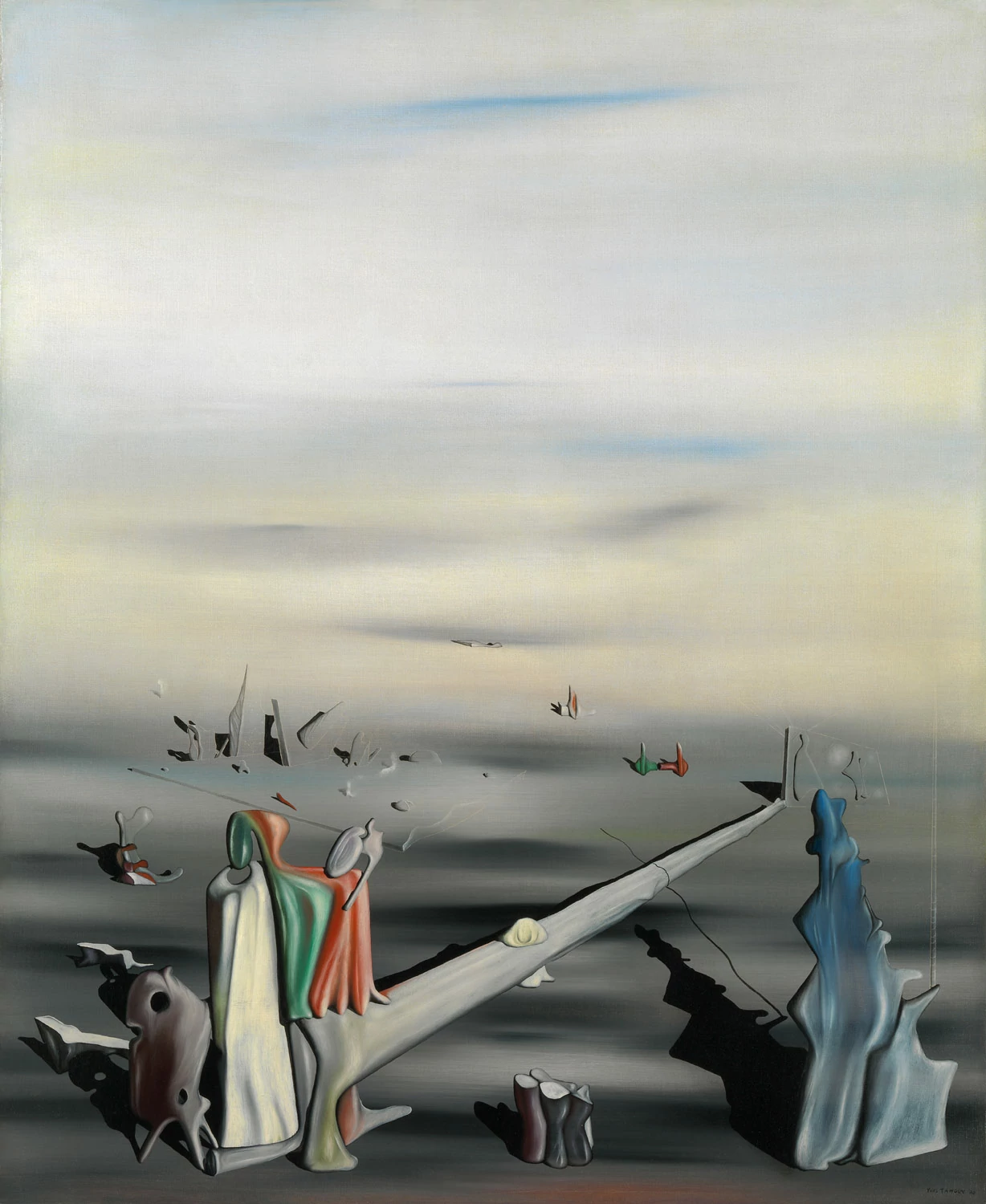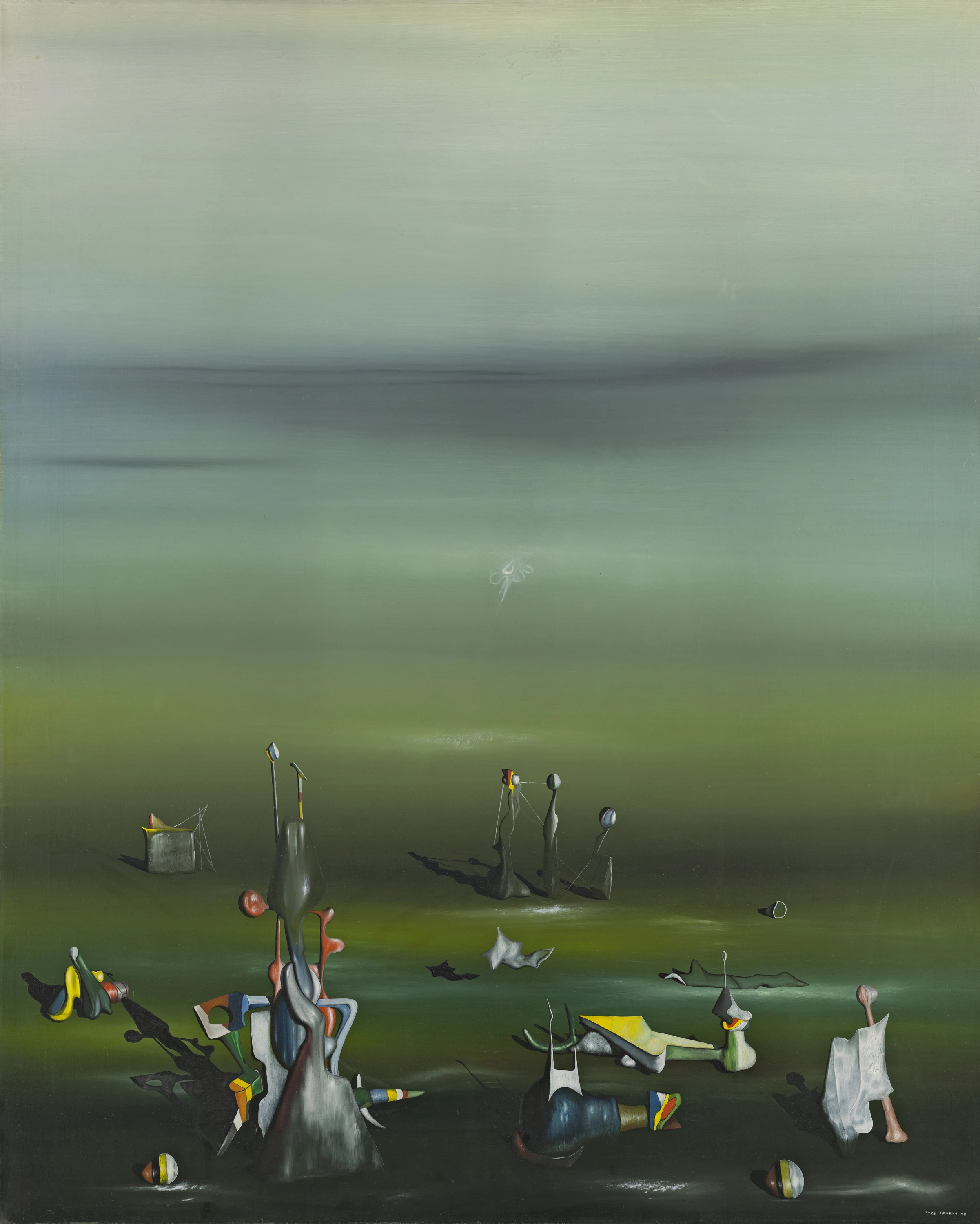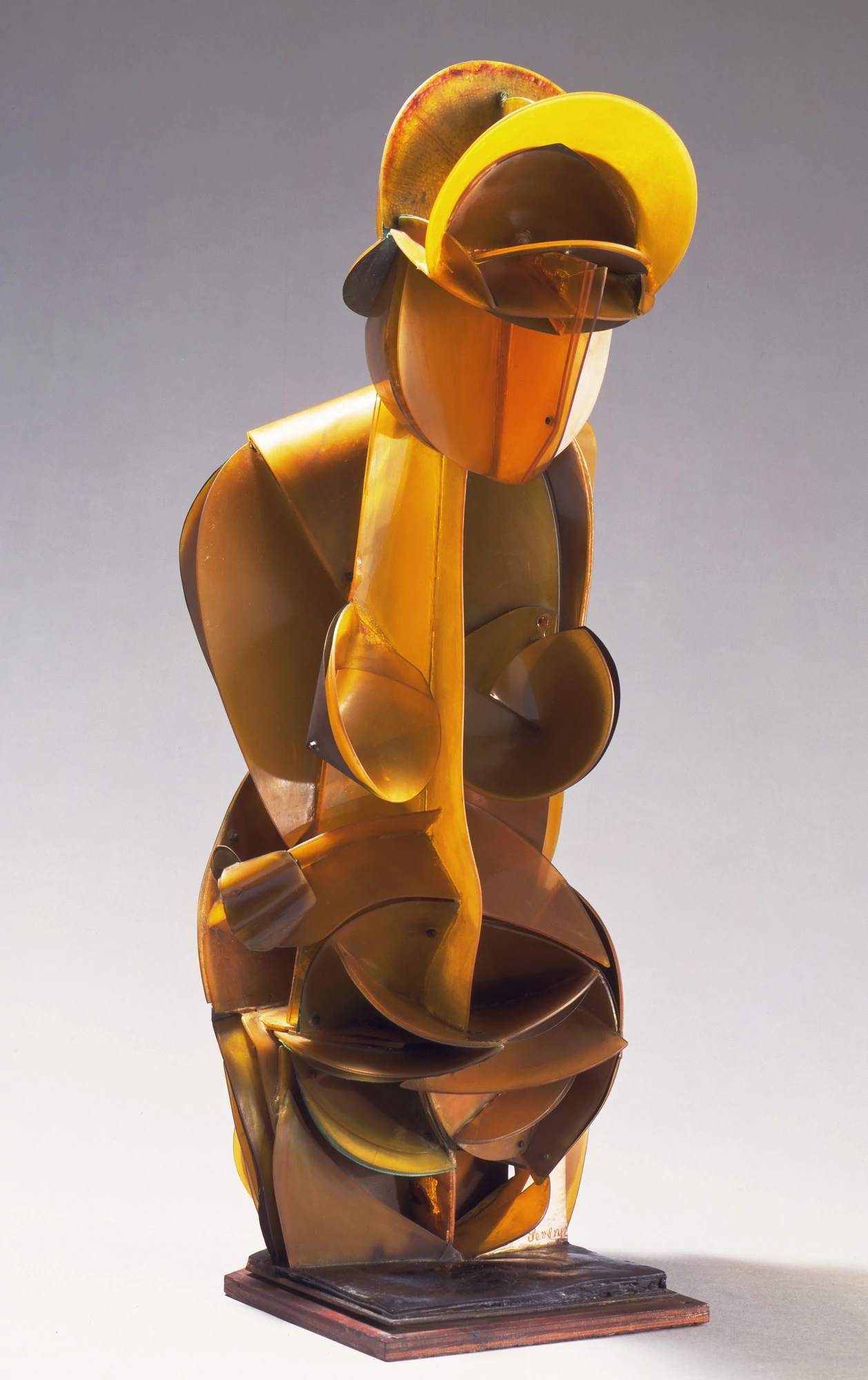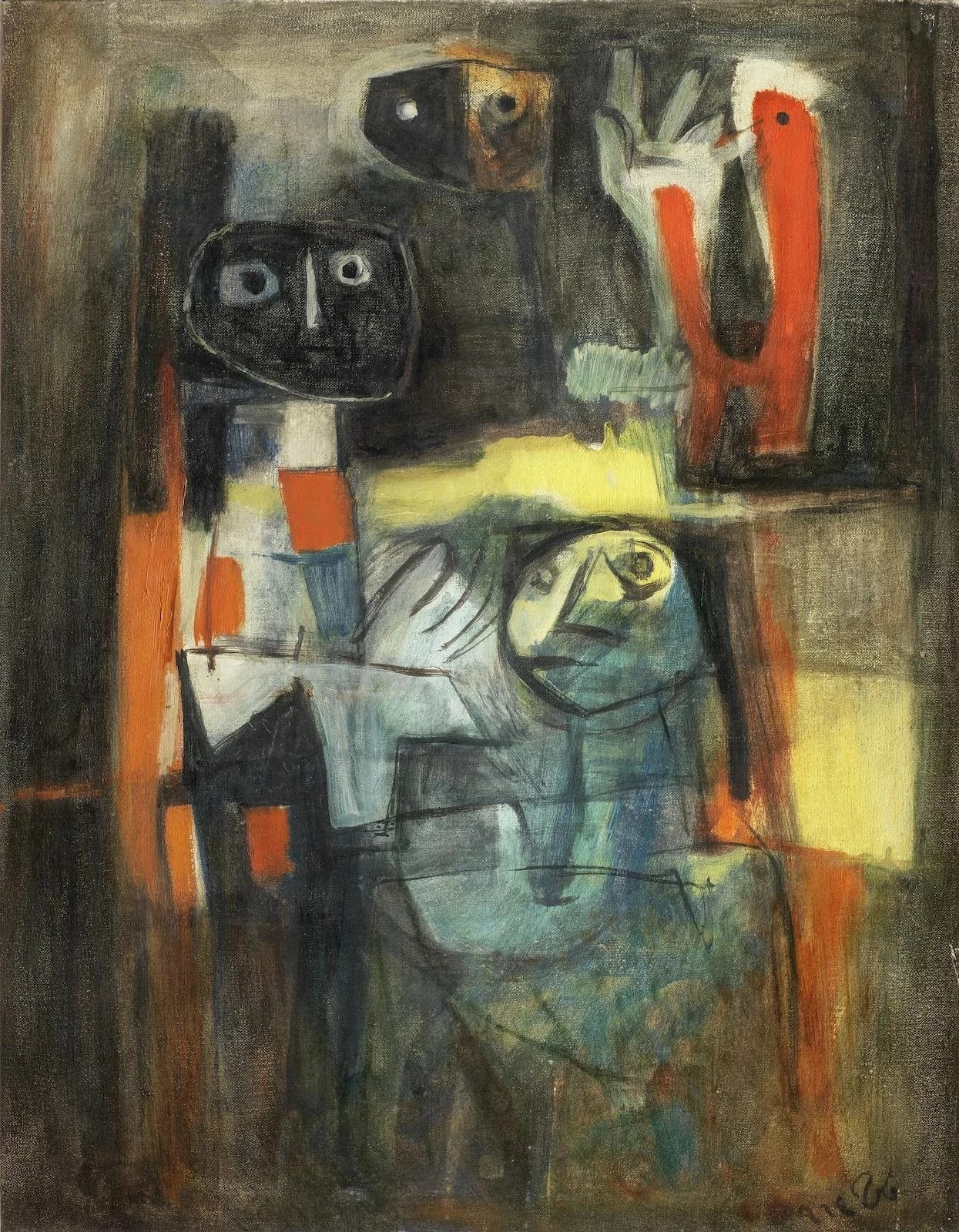As modernism sent artwork veering into the abstract, many artists abandoned all representation of people, places and things—resulting in the purely abstract art that is popular to this day. These are the Jackson Pollocks and Helen Frankenthalers of the world, whose work explores color and the nuances and textures of paint itself.
But abstraction can be applied to other genres with strange, beautiful results. Australian indiginous artists like Emily Kngwarreye are known for compositions that appear abstract, but encode the trails and landmarks of their ancestral landscapes. And few subjects can sustain more distortion and abstraction than the human form. As chess pieces represent knights and bishops, a neolithic menhir suggests a standing figure. Abstract figures, sometimes called personages, appear throughout history but absolutely took over during the brief vogue for Surrealism. Georgio De Chirico used mannequins as stand-ins for people in his haunted metaphysical landscapes, and Salvadore Dali distorted flesh into hideous topiary—but few artists abstracted the human form as creatively as Yves Tanguy.
